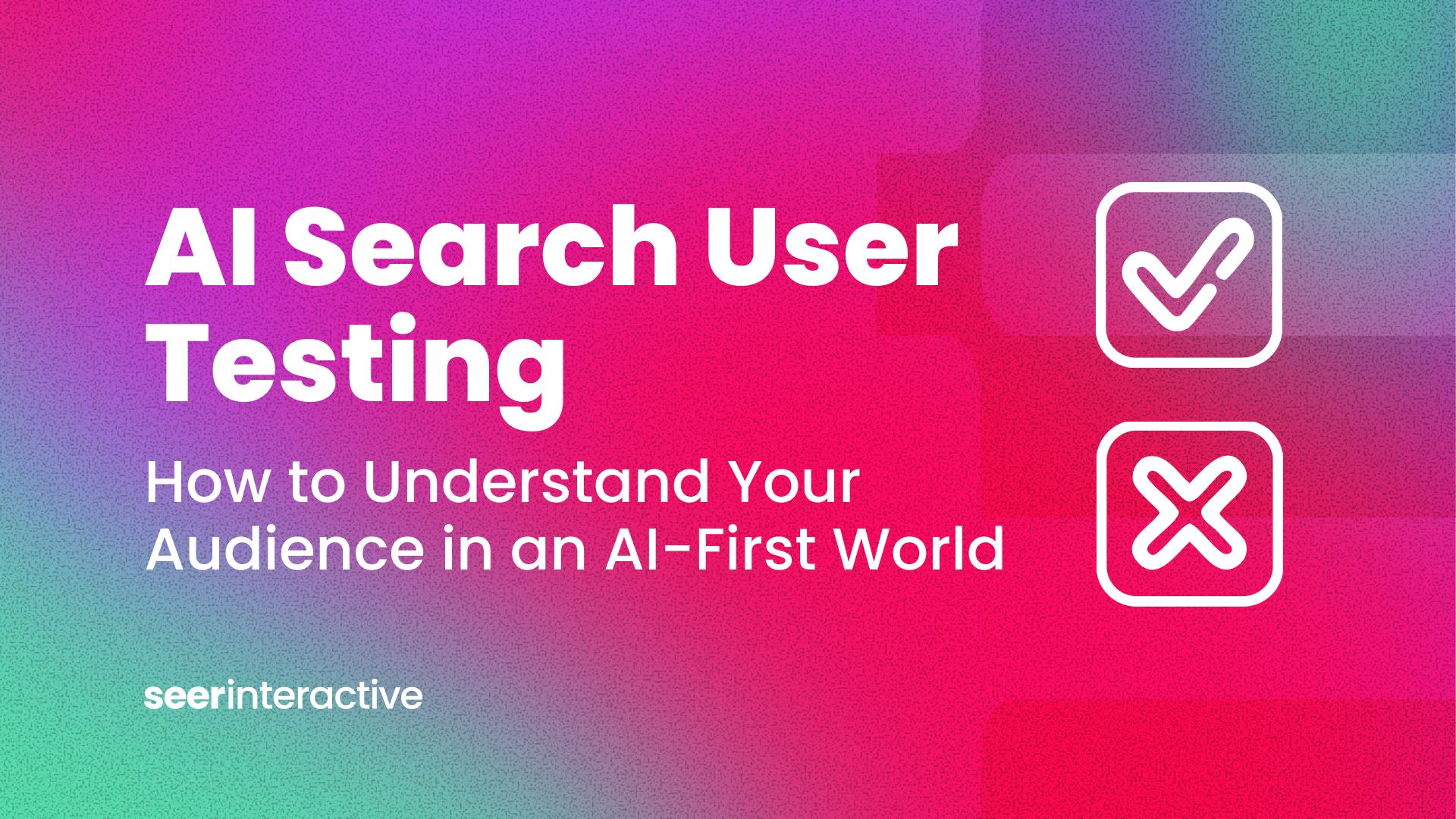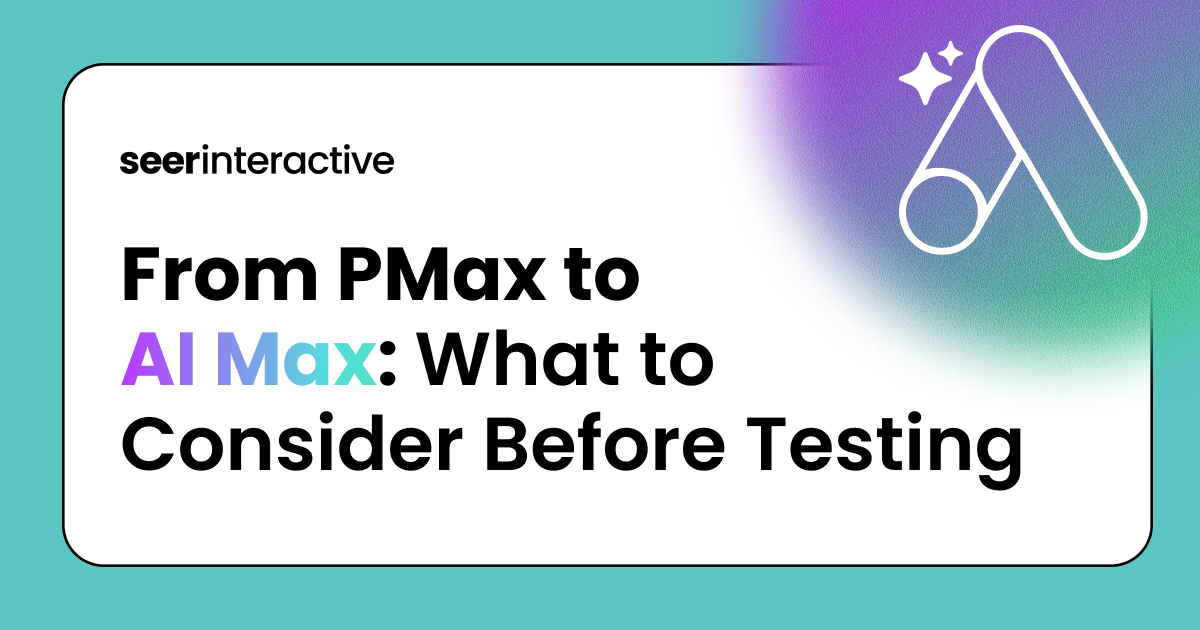At Seer, we see the adoption of AI as a strategic advantage. We work with senior marketing decision-makers; from Digital Marketing Directors to CMOs at large enterprises to transform how they approach SEO, content strategy, and automation at scale. Generic ChatGPT articles often lack the specific language, actionable checklists, and tested best practices these leaders demand.
That’s why our Custom GPTs are built on data-backed methodologies and refined workflows sourced from top industry players like OpenAI, Google, and Claude. We’re here to show you how to move beyond the generic and leverage tailored AI outputs that drive meaningful results.
In this guide, you’ll get:
- Step-by-Step Guide: How to Create a Custom GPT (that actually work for your team)
- Custom GPT Template (to reduce hallucinations and improve accuracy)
- Seer’s Custom GPT Checklist (Seer’s internal acceptance criteria)
So, Why is Seer Building Custom GPTs for Our Marketing Teams?
We don’t believe AI is replacing strategy, we know AI can apmplify it! At Seer, we use Custom GPTs to help scale routine tasks, freeing up our experts for higher-level strategic insights, creativity, and data-backed decisions that move the needle.
Our approach is designed for large companies that demand precision and control over their digital marketing outcomes. By emphasizing business goals and aligning AI outputs with your frameworks and governance models, our internal GPTs empower you to tackle challenges such as:
- Search Intent & SERP Analysis – Integrate website categorization with SERP feature identification to accurately analyze keyword intent and domain relevance.
- Content & SEO Strategy Alignment – Ensure that AI-generated recommendations follow your client governance policies and strategic objectives.
- Performance Benchmarking & Accuracy Thresholds – Implement robust QA mechanisms and scoring systems to measure output reliability and drive continuous improvement.
- Integration with SEO & PPC Campaigns – Enhance your ad copy, keyword categorization, and performance tracking with AI-generated insights that are both precise and actionable.
How to Create a Great Custom GPT: A Step-by-Step Guide

Step 1: Define the GPT’s Purpose
Every great Custom GPT starts with a clear objective. Using Seer’s Custom GPT Acceptance Criteria, outline the following:
- Business Use Case: Define which task the GPT should automate (e.g., SERP intent validation, PPC keyword expansion).
- Structured Workflow: Identify the inputs, processing steps, and specific data points required.
- User Triggers & Expected Outputs: Specify what prompts users will submit and the desired outputs.
Example Objective:
Assist users in categorizing keyword search intent using SERP data while adhering to client governance policies.
Step 2: Structure Instructions & Workflow
Building a robust Custom GPT means designing a workflow that’s clear and foolproof—it’s about following a methodical process:
- Trigger: Start when a user provides a set of keywords.
- Instruction: Extract top-ranking domains, URLs, titles, descriptions, and discern SERP features.
- Validation: Identify missing SERP data and prompt the user for manual input.
- Processing: Categorize domains based on predefined groupings (e.g., brand, eCommerce, aggregator) and classify keywords by search intent (navigational, informational, commercial, transactional).
- Output: Deliver organized, categorized results that spotlight any misalignments with client strategy.
Example Trigger-Instruction Pair:
Trigger: User submits a keyword list.
Instruction: Analyze the results, classify search intent, and highlight domains that match pre-defined client categories.
Step 3: Implement QA & Self-Assessment Mechanisms
Ensuring high-quality outputs is paramount. Integrate self-assessment mechanisms to continuously refine your GPT:
- Scoring Accuracy: Establish an output confidence score (e.g., 95/100) and generate alerts for low-confidence results.
- Performance Benchmarks: Set clear expectations, such as:
- SERP data extraction within 500ms.
- Achieve 95% accuracy in keyword intent classification.
- Iterative Refinement: Instruct the GPT to rate each reply against its instructions. For example:
- "After each response, score your performance out of 10 and refine your approach accordingly."
This continuous feedback loop ensures the GPT evolves alongside your business needs.
Step 4: Integration with Client Strategy & Governance
For mature marketing teams at large companies, consistent brand and strategy alignment is critical. Our approach ensures that:
- Client-Specific Rules: The GPT cross-checks keyword categorization with your organization’s business model and governance policies.
- Strategic Alignment: It flags any deviations between SERP data and client offerings, ensuring seamless integration.
- Automated Alerts: If misalignment occurs, the GPT:
- Lists top-ranking sites,
- Breaks down SERP features (e.g., Featured Snippets, Knowledge Panels),
- Suggests corrective actions based on established governance rules.
Step 5: Testing, Refining, and Optimizing
The best systems are never static—they progress. Refine your GPT model by focusing on:
- User Feedback Loop: Regularly analyze user interactions and refine the GPT based on concrete feedback.
- Benchmarking & Performance Tracking: Monitor the GPT’s accuracy, response times, and overall impact on SEO/PPC performance.
- Knowledge Base Expansion: Continually update the model’s sources and criteria as SERP trends and client strategies evolve.
Custom GPT Resources & Free Templates
To help you implement these best practices, we’ve developed FREE detailed templates that you can use to build your own Custom GPTs for marketing automation. These resources offer immediate, actionable value with practical checklists and example prompts.

Download both templates using the buttons below or continue reading to review each template:
Custom GPT Template
Use the template below to design a structured Custom GPT:
Name:
[Enter Custom GPT Name]
Description:
[Briefly describe the purpose of this GPT. For example, "An AI-powered assistant that automates content summarization and research for marketing teams."]
Instructions
Objective:
[Define the key purpose. E.g., "Assist in generating high-quality content summaries based on uploaded research papers or online sources."]
First Interaction / Message
- Trigger: [Identify the initial trigger (e.g., "User provides a topic or uploads a document").]
- Instruction: [Detail the first actions. For example, "Extract key takeaways and main arguments from the provided text."]
Workflow & Interaction Design
Step 1: Data Input & Processing
- Trigger: [User enters a query related to digital marketing.]
- Instruction: [Scrape trusted sources, compile insights, and organize them into key takeaways.]
Step 2: Data Structuring & Output Formatting
- Trigger: [User requests a structured report.]
- Instruction: [Generate a markdown report featuring clearly defined headings, bullet points, and recommended actions.]
Step 3: Refinement & Optimization
- Trigger: [User requests a deeper analysis of a specific section.]
- Instruction: [Expand that section with additional details, citations, and references as needed.]
Strategy & Business Rules (If Applicable)
- Trigger: [User asks for business-specific customization.]
- Instruction: [Ensure all output aligns with the brand’s tone, voice, and compliance guidelines.]
Alerts & Error Handling
- Trigger: [Example: API failure or missing data.]
- Instruction: [Notify the user, suggest alternative sources, or request manual input.]
User Interaction & Confirmation
- Trigger: [After presenting results.]
- Instruction: [Allow users to request revisions and to integrate their own insights before finalizing the output.]
Example Outputs
Example 1: Content Summarization GPT
User Input:"Summarize the latest AI trends for 2024."
GPT Response:
- Key Trends: AI-generated search, multimodal models, AI governance.
- Sources: MIT Tech Review, OpenAI Reports.
- Next Steps: "Would you like additional insights on AI governance?"
Example 2: Lead Qualification GPT
User Input: "Qualify this lead based on our B2B SaaS criteria.
GPT Response:
- Company: Acme Inc.
- Industry: SaaS
- Lead Score: 87/100 (High Intent)
- Next Step: "Schedule a sales follow-up?"
Performance Benchmarks & Thresholds
Define these key metrics:
- Response Time: Under 500ms for queries under 50 words.
- Accuracy: Achieve 95% precision in intent classification.
- Completion Rate: Attain 90%+ successful execution of instructions.
- Error Rate: Maintain less than 5% incorrect or incomplete responses.
Integration & API Callouts
For external integrations:
- Trigger: When real-time data is requested.
- Instruction: The GPT calls [Insert API Name] and retrieves relevant data.
Example:
- SERP Data Retrieval: "Invoke [Search Engine API] to fetch top results."
- CRM Lookup: "Retrieve lead info from [CRM Platform API]."
- Market Trend Analysis: "Pull live trends from [Industry Report API]."
Refinement & Iterative Feedback Loop
Establish continuous improvement:
- Trigger: User requests enhancements or clarifications.
- Instruction: "Prompt for clarification, rate your response, and refine accordingly.”
Example Follow-Up:
- "Would you like more detail on this topic?"
- "Do you prefer a bullet-point summary or a detailed explanation?"
- "Should I prioritize the latest data sources?"
Checklist for a Great Custom GPT
Below is Seer Interactive’s comprehensive acceptance criteria for creating high-value Custom GPTs:
![]() Instruction Clarity & Completeness
Instruction Clarity & Completeness
![]() Clearly defined objective and purpose
Clearly defined objective and purpose![]() Detailed, step-by-step instructions
Detailed, step-by-step instructions![]() Explicit user triggers and conversation starters
Explicit user triggers and conversation starters
![]() Workflow & Interaction Design
Workflow & Interaction Design
![]() Clearly defined objective and purpose
Clearly defined objective and purpose![]() Clear explanation of the workflow
Clear explanation of the workflow![]() Granular multi-step instructions and iterative refinement
Granular multi-step instructions and iterative refinement
![]() Content Structure & Output Formatting
Content Structure & Output Formatting
![]() Consistent markdown formatting
Consistent markdown formatting![]() Well-defined output templates and content sections
Well-defined output templates and content sections![]() Inclusion of example outputs
Inclusion of example outputs
![]() Quality Assurance & Testing
Quality Assurance & Testing
![]() Self-assessment mechanisms implemented
Self-assessment mechanisms implemented![]() Defined performance benchmarks and accuracy thresholds
Defined performance benchmarks and accuracy thresholds
![]() Tools, Actions, & APIs
Tools, Actions, & APIs
![]() Explicit references to relevant knowledge/documents
Explicit references to relevant knowledge/documents![]() Clear integration details and error handling protocols
Clear integration details and error handling protocols
![]() Safety, Compliance & Ethical Considerations
Safety, Compliance & Ethical Considerations
![]() No sensitive client data or names
No sensitive client data or names![]() Positive, clear language with proactive low-confidence alerts
Positive, clear language with proactive low-confidence alerts
Conclusion
By following Seer’s Custom GPT Checklist and leveraging our detailed Custom GPT Template, your marketing team can develop AI assistants that deliver precise, actionable, and aligned outputs to enhance your SEO, PPC, and overall digital marketing strategies.
Our framework—built on tested best practices and continuously refined via real-world application—ensures you’re not creating another generic ChatGPT tool but a powerful, tailored solution that drives measurable business impact.
Are you ready to transform your digital strategy with data-driven AI insights? Start structuring your AI workflows with our step-by-step guide today!


